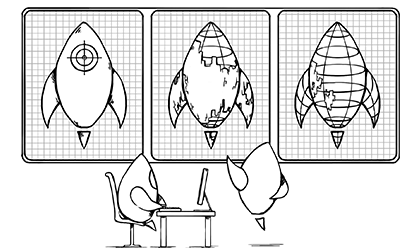There’s a very large elephant in the room at this year’s WWDC. AR (augmented reality) and VR (virtual reality) have been buzzwords in the technology industry for quite some time, and if the rumors are correct Apple will be building its own AR/VR experiences with new hardware to be debuted at this year’s developer conference.
Apple already has two powerful frameworks for leveraging this technology in ARKit and RealityKit, and we’re expecting to see a lot of new items at WWDC including, potentially, new hardware. With these potential changes just weeks away, it’s important to take a look at the impacts this technology could have on business to business (B2B) applications — and how MartianCraft can build a custom application for your business.
By harnessing AR and VR tools, businesses can optimize their operations, drive innovation, and deliver transformative experiences that were once unimaginable. Below are just 10 impactful use cases for AR and VR in business, shedding light on how these technologies can reshape industries and pave the way for more efficient and engaging software solutions.
-
Enhanced Product Visualization: Businesses can use AR/VR tools to create immersive experiences that allow customers to visualize and interact with their products in a virtual environment. This can help customers make informed purchasing decisions and increase sales.
-
Virtual Showrooms: Building on enhanced product visualization, instead of traditional physical showrooms businesses can create virtual showrooms using AR/VR technology. This would allow customers to explore and experience products remotely, eliminating the need for a physical location and expanding the potential customer base. Technology like this can improve sales and salesmanship.
-
Employee Training and Education: AR/VR tools can be used to create realistic training simulations for employees. This can be particularly useful in industries that require hands-on training, such as manufacturing or health care. AR/VR training programs can enhance learning outcomes and reduce costs associated with traditional training methods.
-
Remote Collaboration: AR tools enable remote teams to collaborate in a virtual space. This enhances communication and teamwork, enabling businesses to streamline operations and reduce travel expenses.
-
Interactive Product Manuals: Businesses can leverage AR to create interactive product manuals. By overlaying digital information onto physical products, users can access real-time instructions, troubleshooting guides, and other relevant information, making product usage more intuitive and efficient.
-
Virtual Prototyping: Instead of creating physical prototypes, businesses can use VR tools to design and test products virtually. This saves time and resources, allowing for rapid iterations and improvements in the design process.
-
Virtual Conferences and Events: With AR/VR software tools, businesses can organize virtual conferences, trade shows, or events. Attendees can participate remotely, interact with virtual booths, attend presentations, and network with other participants.
-
Customization and Personalization: AR can facilitate customization and personalization experiences for customers. For example, customers can use AR applications to visualize how products would look in their homes or try on virtual clothing before making a purchase.
-
Real Estate Visualization: AR software can help real estate businesses showcase properties in a more immersive way than typical photos or videos allow. Customers can use AR applications to view virtual furniture placement, explore floor plans, and get a realistic sense of the property before visiting it in person.
-
Data Visualization: Businesses can use AR/VR tools to visualize complex data sets in an interactive and intuitive way. This can help in data analysis, decision-making processes, and presenting information to stakeholders in a more engaging manner.
AR and VR have the potential to revolutionize the way that B2B applications are used. They can provide businesses with new ways to collaborate, train employees, and engage customers, all while saving costs and reducing the need for physical prototypes and simulations. And with the potential release of an AR/VR solution at WWDC this year, now is the time for businesses to start thinking about how they can incorporate these technologies into their operations.
If you’re looking to build a cutting-edge AR or VR enterprise application or custom tool for your company, get in touch with MartianCraft today and we’ll walk you through our processes for crafting powerful and unique tools.


